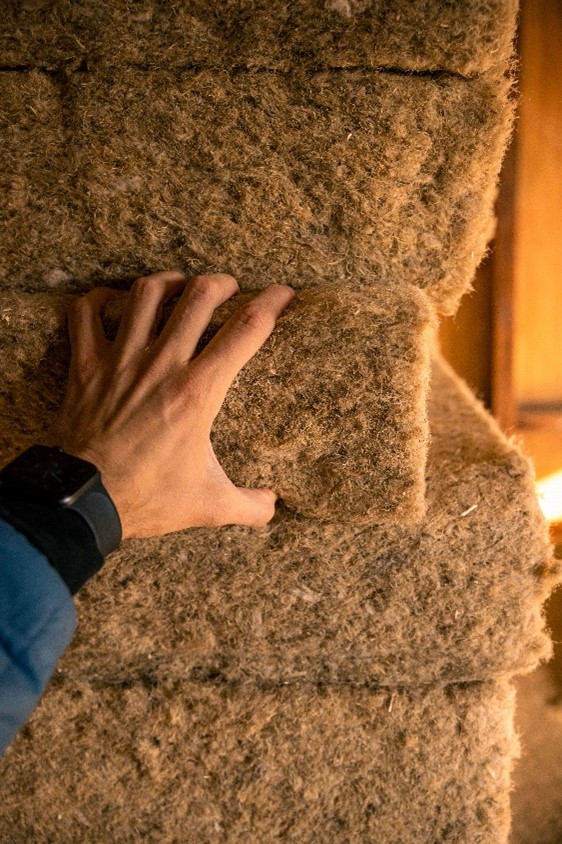Green buildings are trending now more than ever. With that comes innovation with energy efficiency, HVAC optimization, and green materials. In particular, insulation is one of the fastest growing segments of the construction market, due to the increased focus on improving the energy efficiency of the built environment, which is currently responsible for approximately 40% of our domestic energy consumption and carbon footprint.
Matthew Mead, Founder and CEO of Hempitecture, explained in a short interview how they are bringing sustainable, plant-based insulation to your home.
Can you describe what your company does and the impact?
Hempitecture specializes in biobased building materials primarily derived from rapidly renewable industrial hemp. Industrial hemp fiber is an ideal feedstock for building materials because it is a strong, resilient fiber, that also captures carbon dioxide during its growth. By utilizing this carbon capturing natural fiber into our materials, our products are high performing, highly insulating, and non-toxic, all while have a low embodied energy and carbon footprint.
Hempitecture is a unique company in the building materials space because a large portion of our competitors have products that inherently lack sustainability, whereas Hempitecture’s products embody both health and sustainability.
Our products benefit both people and planet, in that they contribute to healthier indoor air quality and sequestration of greenhouse gasses, while simultaneously providing opportunities for rural communities where our material feedstock is produced.
What does the future look like?
There will be an increased importance on selecting insulation products based on their carbon footprint, due to the fact that many insulation products which seek to reduce energy loads and reduce carbon emissions, are manufactured with carbon intensive materials or processes.
Hempitecture is solving this need in a sustainable way, as the material sequesters carbon as it grows. While it is more cost-effective to add insulation during construction than to retrofit it after construction is finished, and replacing current insulation with Hempitecture may be worth it.
About The Author

Daniel currently works at Lawrence Livermore National Laboratory. His original assignment was to maintain and update facility safety documentation for all facilities on-site, and perform risk analysis. Over time, his role has expanded to leading continuous improvement efforts through product management.
Concurrently, Daniel volunteers with Techstars, helping organize startup weekends, and with the American Institute of Chemical Engineers, organizing events on the local and national levels of the organization. He also volunteers with One World, and previously with Powerhouse Ventures, to source and screen startups for potential investment.
Daniel holds a BS in Chemical Engineering from UC Davis, and recently completed coursework in energy innovation from Stanford. His passion is at the intersection of sustainability, innovation, and business.

